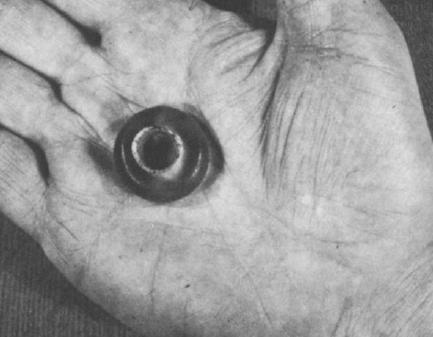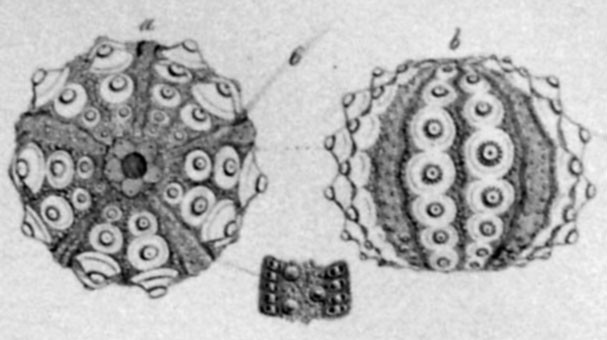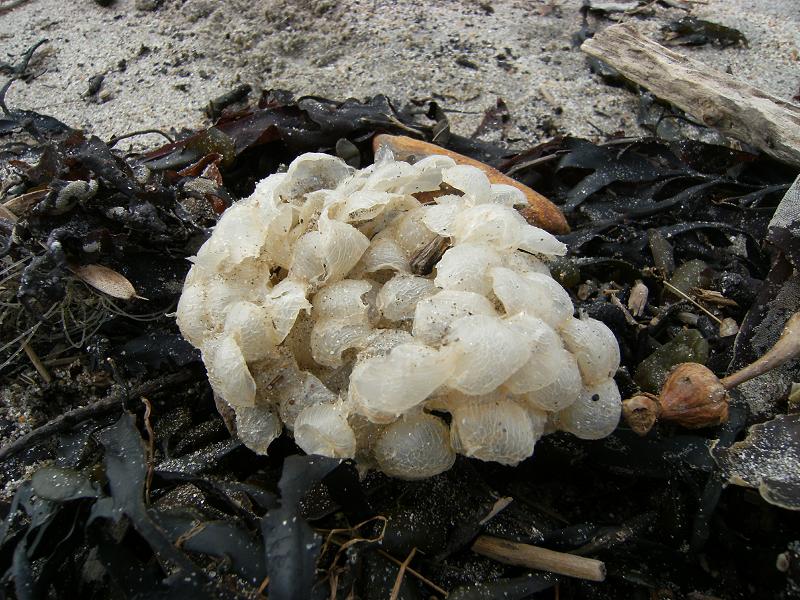Druids’ Eggs June 10, 2011
Author: Beach Combing | in : Ancient, Modern , trackback
An interesting text from Pliny:
(29, 3*) There is also a sort of egg, famous in the provinces of Gaul, but ignored by the Greeks. Innumerable snakes coil themselves into a ball in the summertime. Thus they make it so that it is held together by a bodily secretion and by their saliva. It is called an anguinum. The Druids say that [the snakes] hiss and cast it upwards, and that it is to be caught in a cloak so that it not touch the ground. One must immediately ride off on a horse with it, for the snakes will continue to pursue until the course of a stream blocks their way. If one tests it, the anguinum will float against the current of a river even when covered in gold. And, as the magi will throw a cloak of deception over their trickery, they make out as though the eggs are to be taken only on a particular point in the lunar cycle, as though it was up to human beings to determine the snakes’ role in this procedure. Nonetheless, I have seen one of these eggs myself. It was round the size of a small apple. The shell was cartilaginous, and mottled with cups like the tentacles of a squid. The Druids value it highly: it is praised as insuring success in litigation and in going to audiences with kings. However, this is nonsense; for once a man (a Roman knight and a tribesman of the Vocontii) held one of these eggs against his body during a trial, and was condemned to death by the Emperor Claudius, for that reason alone so far as I can tell.
Beachcombing is going to leave aside all the questions about the fictive snakey creation of the anguinum, the druids’ egg as scholars refer to it: though this description is strangely reminiscent of the Rattenkönig, multiple rats with their tales glued or tied together. No, rather, he is interested in the identity of the object that fell into Pliny’s hand. Excerpting the relevant parts of the text:
If one tests it, the anguinum will float against the current of a river even when covered in gold… I have seen one of these eggs myself. It was round, the size of a small apple. The shell was cartilaginous, and mottled with cups like the tentacles of a squid.
What did Pliny have passed to him and what, if it the same object, did the druids try and pass off as an anguinum in their homelands?
Three candidates known to Beachcombing exist.
1) Glain y Neidr, Bead of the Adders. Still today in Wales there is the tradition of snake stones, small polished bits of glass from Roman or pre-Roman times. The problem here is that the glass in question does not match in any way the description of Pliny. However, in Welsh tradition there is the notion that these ‘beads’ are created by collections of snakes. According to an early eighteenth-century text: ‘’tis usual for snakes to meet in companies, and that by joyning heads together and hissing, a kind of Bubble is form’d like a ring about the head of one of them, which the rest by continual hissing blow on till it comes off at the tail, and then it immediately hardens, and resembles a glass ring’.
2) A fossil. Othenio Abel (celebrated recently by Beachcombing as the progenitor of the elephant = Cyclops theory) suggested in 1939 that the druids’ egg was actually Hemicidaris crenularis Lamk, a fossilised sea urchin. Such fossilised suggestions, in fact, date back to the eighteenth century. These fossils would possibly float (?) and they certainly match Pliny’s description in other respects. However, Pliny – no mean naturalist – would surely have recognised this for what it was?
3) Whelk egg casing. Stuart Piggott in his work on the druids made another suggestion, namely that the druids’ egg was empty Whelk egg casing. These certainly float. They would, however, be extremely common in northern Europe – though, of course, Pliny was in Italy – perhaps too common to justify all the excitement Pliny conveys.
Other druids’ eggs? drbeachcombing AT yahoo DOT com
***
10 June 2011: Invisible writes in with a fourth suggestion: ‘This is rather a long shot but I wonder if these Druids’ eggs are the gall of what I know as Cedar Apple Rot, but which is also called Cedar Apple Rust. Tough skinned, tentacles like a squid. Possibly the ‘cups’ refers to the non-spongy parts of the gall before the telia get water-logged. I have no idea if these float or if they appear on trees in whatever part of Gaul Pliny was referencing. They look exceedingly nasty and feel worse. I can’t account for these galls emerging from snake balls (which are usually associated with mating), unless the snakes (grass? Western whip?) live around cedar trees.’ Anaconda is also interested in snakes. ‘Are you aware that snakes do often writhe together. Some snakes have male on male fights that could lead to misunderstandings and often three or four snakes take part simultaneously. Some snakes also coil together in winter, apparently for warmth.’ Thanks Invisible and thanks Anaconda!
25 June 2011: K writes in with some ancillary thoughts on the DE, ‘After reading your article quoting Pliny the Elder, I was struck by the similarities in his language to certain ideas in alchemy. In my curiosity, I think I stumbled on something that many have been the influence to what Pliny was speaking of: [quoting one Zen Music] ‘‘It’s a symbol from the ancient Orphic Mysteries, the egg representing the cosmos, the serpent the creative spirit. The egg is also the soul of the philosopher, the serpent the mysteries. At the time of initiation the philosopher’s soul hatches from the egg, i.e. is reborn from physical into spiritual existence. The Orphic egg is usually represented as an egg surrounded by a coiled serpent. The egg symbolizes the belief in the Greek Orphic religion that the universe originated from within a silver egg. The first emanation from this egg, described in an ancient hymn, was Phanes-dionysus, the personification of light: In Greek myth, particularly Orphic thought, Phanes is the golden winged Primordial Being who was hatched from the shining Cosmic Egg that was the source of the universe. Called Protogonos (First-Born) and Eros (Love) – being the seed of gods and men – Phanes means ‘Manifestor’ or ‘Revealer’, and is related to the Greek words ‘light’ and ‘to shine forth’. An ancient Orphic hymn addresses him thus: ineffable, hidden, brilliant scion, whose motion is whirring, you scattered the dark mist that lay before your eyes and, flapping your wings, you whirled about, and through this world you brought pure light…’’ Thanks K!!





